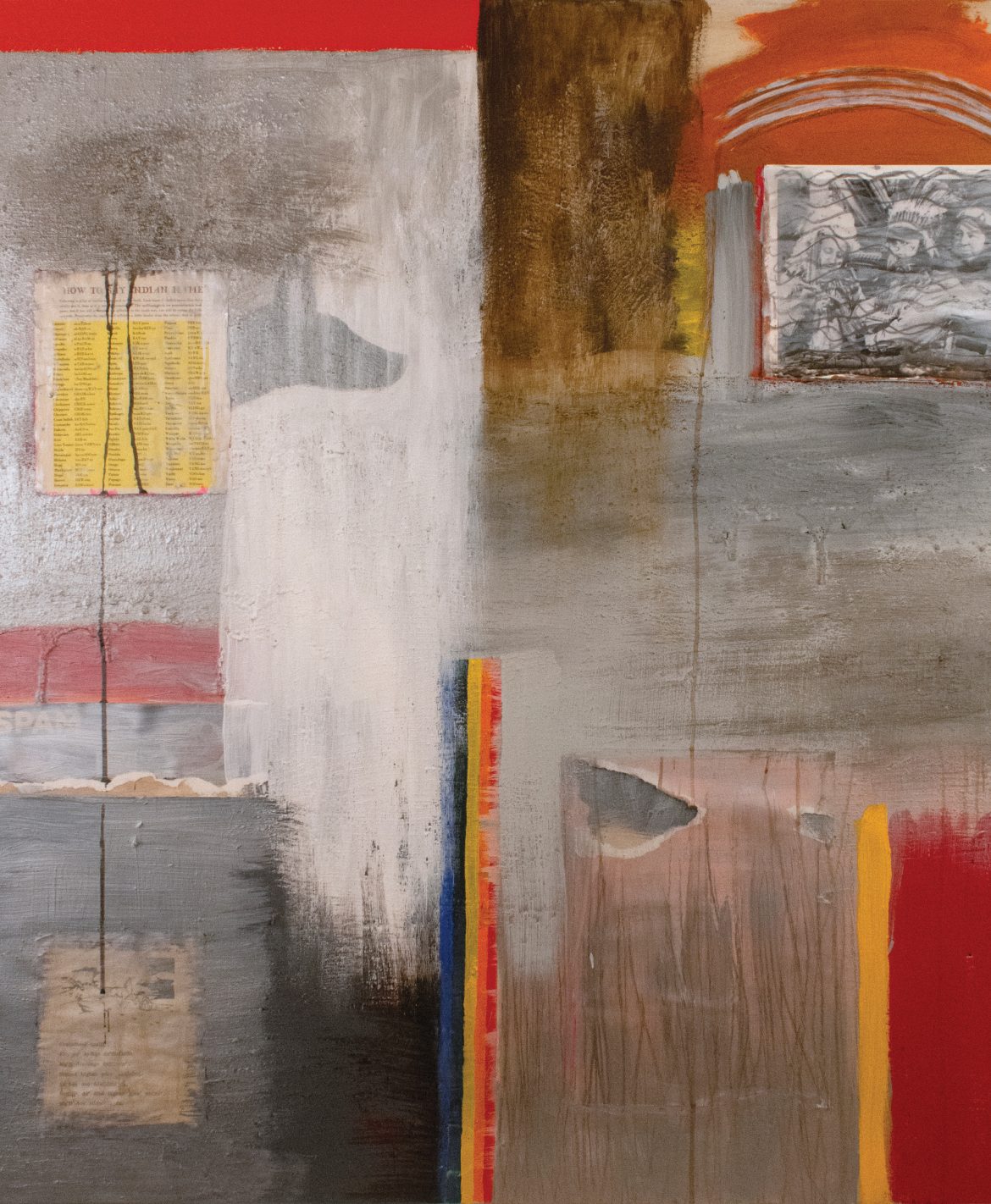THREE ARTISTS’ WORLDVIEWS GAIN EXPRESSION THROUGH SHOWS, SHOES AND SYMBOLS
Written by Fiona Max
Some art catches your eye, some demands your attention. Artist Louie Gong wants to reshape the business of Native American art. John Feodorov wants to make people laugh— and then make them think. Lillian Pitt wants to summon ancestral stories, along with a call for fairness, equality and compassion. Though the media through which they tell their stories vary greatly, Feodorov, Gong and Pitt have defined what it means to be a contemporary Native artist, creating space for the generation that follows them.
JOHN FEODOROV
JOHN FEODOROV specializes in contradictions. Feodorov grew up in the suburbs of Los Angeles, but spent his summers on a Navajo reservation with his grandparents. His mother converted to Jehovah’s Witness—a faith he would abandon as an adult. “Not only was I this Native kid in a predominantly white school, the fact that I wasn’t saluting the flag or celebrating Christmas during the Cold War made me stand out,” Feodorov said. “I’ve spent my whole life ‘in-between.’”
But it is Feodorov’s heightened sense of the in-between, of contradictions, that would ultimately inspire his work. When Feodorov was in his 20s, he moved to Santa Fe, where the New Age movement was unfolding. Disenchanted with their own religious experience, white Christians were turning to traditional Buddhist and Native practices as a means of spirituality. Feodorov found New Age appropriation to be almost comical. “You can’t become a ‘born again’ Native,’’ Feodorov jokes. “Native Americans aren’t looking for converts—it’s a worldview, and a worldview is about being connected to the geography and mythology of that worldview.”
For Feodorov, it was a classic example of capitalists finding a way to commoditize something sacred. In answer to this, Feodorov began juxtaposing traditional Native symbols and mythology with mainstream American culture—paintings of corporate America as a tribal deity, a performance piece which became the installation “The Office Shaman & Other Mythologies” and the mixed media assemblages “Totem Teddies.” As is often the case, he found humor and satire to be the best vehicle for his observations. “There’s actually quite a bit of humor in Native American spirituality, the humor of the culture is in its mythology and stories.”
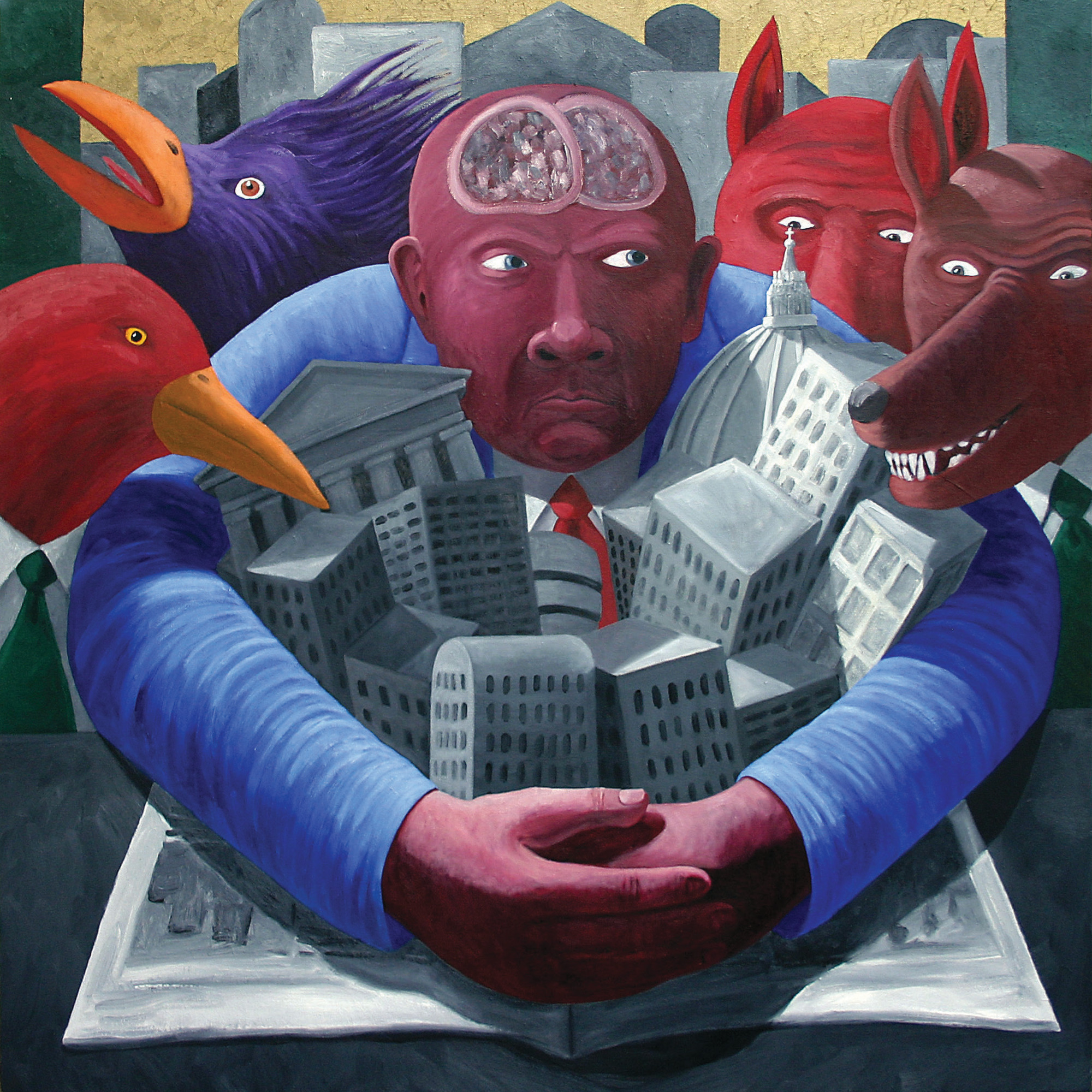
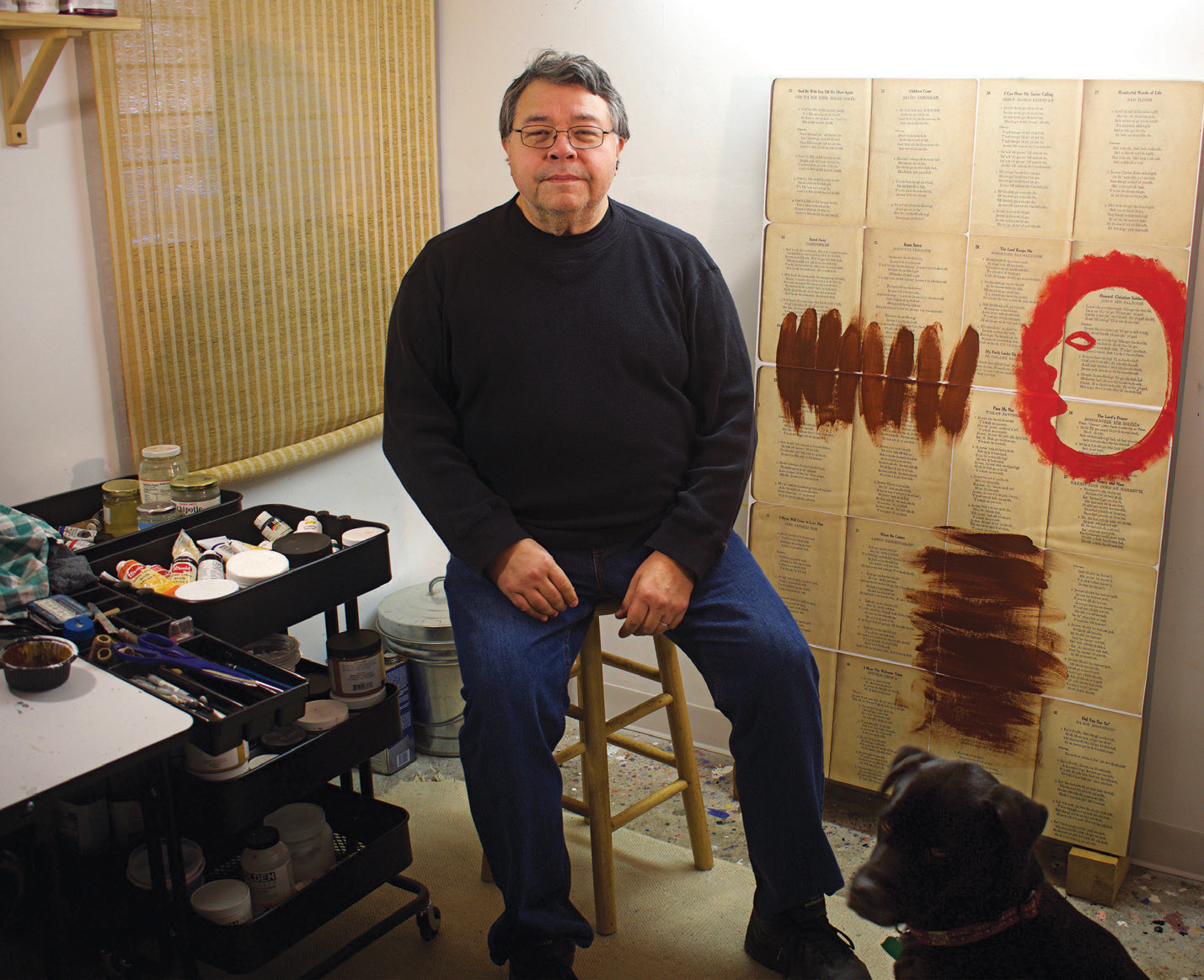
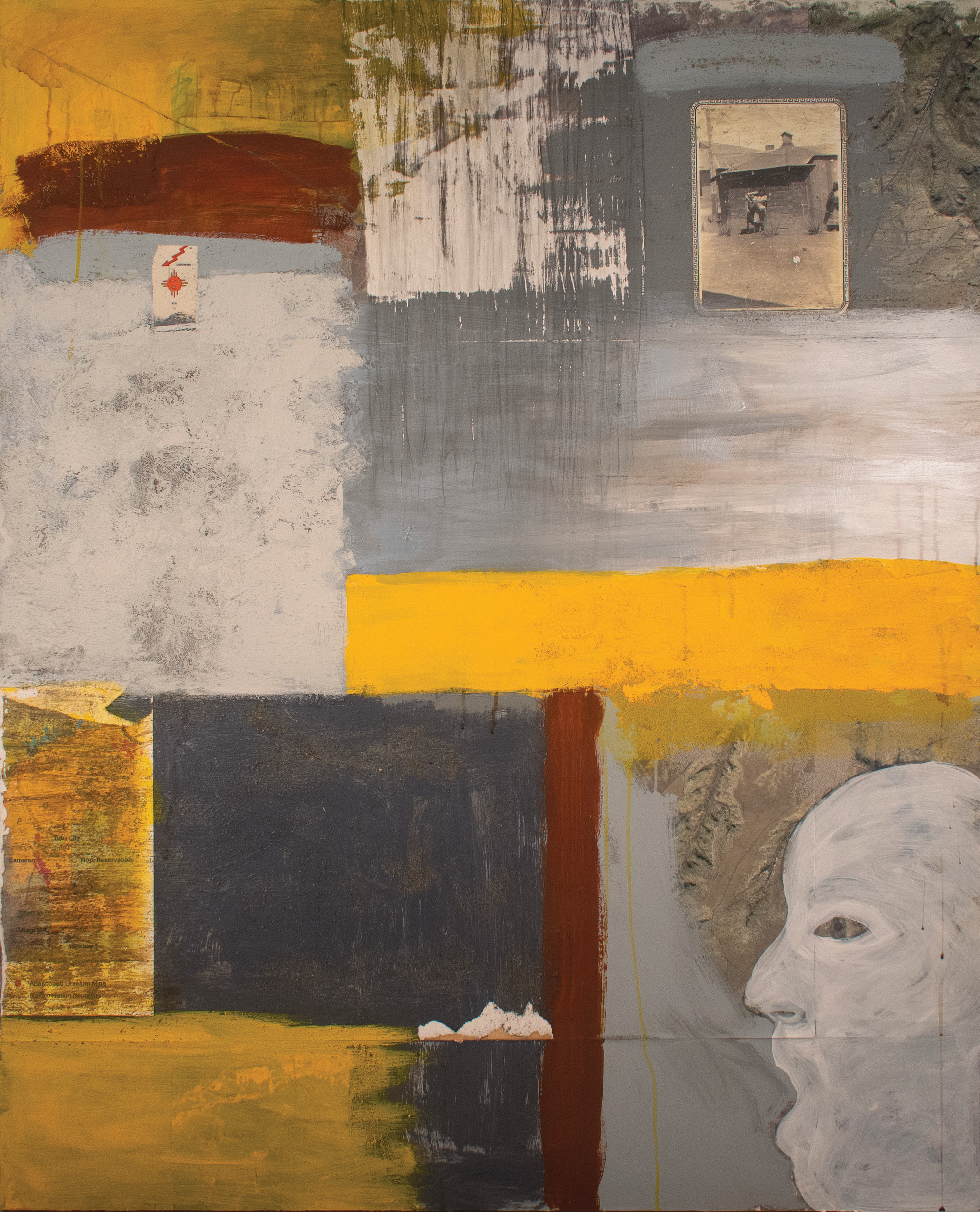
Feodorov has never contained himself to one medium. He works with wood, paint, clay, music and performance art. Still, he continues to explore his depth as an artist. “When I was younger, I felt like I had to make art that was topical, and to be excited by how paint textures and how colors respond to each other was unnecessary,” Feodorov said.
It took him until three years ago to realize that was complete nonsense. “Maybe this is the benefit of being old,” Feodorov said, smiling. “I don’t partition myself anymore.… It’s not like I do my thing with the art and then I’m like ‘Now I will go to the disco!’ I don’t have to calculate anymore. Now making art is just like … sweating.”
What came out of this realization was his latest series of paintings, “Assimilations.” The series is told through a Native lens, but speaks to the struggles and loss that other ethnicities have experienced in America’s white-dominant culture. “I wanted to show how the Native experience has relevance around the globe. I wanted to ask how much you have to give up in terms of your own cultural identity to be successful or semi-successful in America.” Feodorov is an Associate Professor of Art at Western Washington University in Bellingham, but will be taking some time off this fall to work on a painting series he is calling “Yellow Dirt.” The title refers to the uranium pollution from more than 500 abandoned uranium mines, which have been linked to kidney disease and cancer in the Navajo nation. So far, Feodorov is pleased with the series, which he expects will keep him busy for the rest of the year.
LOUIE GONG
FOR LOUIE GONG, it would be remiss to talk about his art career without talking about the power relationships within the art industry and in entrepreneurship. Gong hails from the Nooksack Tribe in Northwest Washington, but also has Chinese, French and Scottish heritage. One day, when Gong went to buy a pair of shoes, he was struck by the feeling that not a single pair reflected his culture. He bought a plain, gray pair of Vans. At home, Gong took a Sharpie to the shoes, and
in a couple of hours had transformed them into a piece of Coast-Salish art. When Gong showed up to work at the Muckleshoot Tribal College in Auburn wearing his new shoes, the word quickly spread—everyone wanted a pair. Soon, Gong was designing a pair a day as his shoes gained traction on Facebook.
Even before discovering his knack for design, Gong had been interviewed by MSNBC, The New York Times, NBC and the BBC as a leading voice in the modern multiracial movement. As
an activist, he already had a deep and personal view of institutions that had denied his people a seat at the table for centuries. It was only natural that Gong would find himself addressing issues of power with his art. “I wanted to make art that was relevant to people who grew up like me,” Gong said. “People like me did not grow up walking through art galleries.” Shoes are far more accessible than a painting hanging on a museum wall. “You have to understand you’re making art for a mostly white audience [in galleries],” Gong said.
As his success grew, Gong started Seattle-based fashion and lifestyle brand Eighth Generation. Eighth Generation’s staff is 75 percent Native. It is owned by the Snoqualmie Tribe and prides itself as being the first fashion and lifestyle brand to be owned and operated by a tribe. Corporate companies regularly engage in tokenism and profiting from BIPOC artists without actually uplifting the artists’ communities, Gong said. Eighth Generation’s chief operating officer started as a worker in their store. Its retail manager and development lead likewise began as interns. “That is professional and community knowledge that is getting embedded into our communities,” Gong said. “That never happens if you’re just working with non-Native companies that happen to license art from Native artists.”
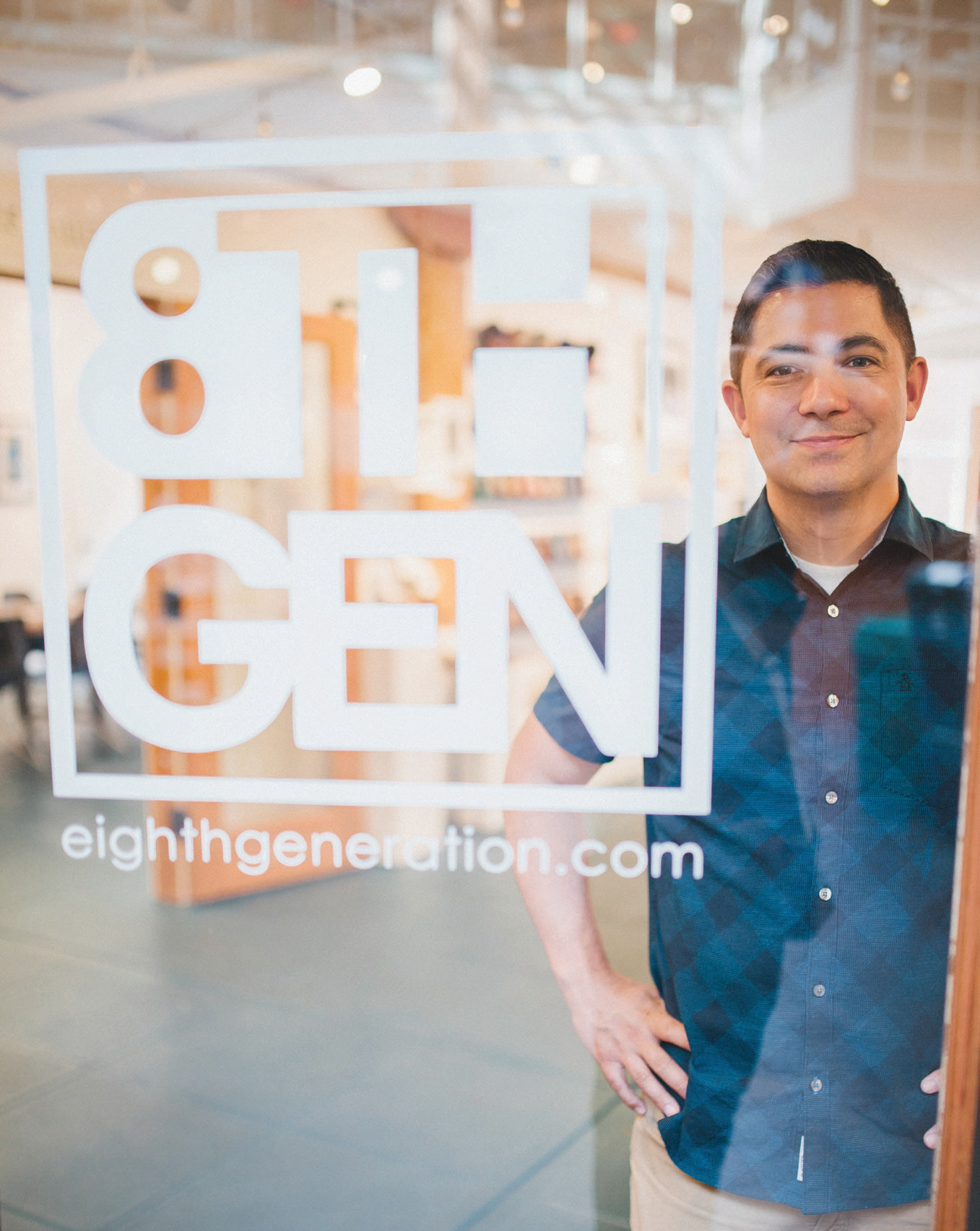
The company’s business model, which is aptly named “the decolonizing partnership model,” is redefining the way Native artists and companies do business with big brands. Eighth Generation is unveiling collaborations with Seattle-based companies in the fall. “I’m not a passive participant in these projects,” Gong said. “We are creating the vision, and they are getting on board with our vision. … If they want to call themselves partners with Eighth Generation, they need to be invested in our success, not just how they can leverage us to make more profit.”
Gong envisions that ten years from now there will be thousands of companies like Eighth Generation. “I always talk about the work to reclaim identity and culture,” Gong said. “People think if you’re not born with access to ceremony and tradition, you’re not entitled to it, but the reality is there are so many ways for Native people to be legitimately disenfranchised from their culture. … We need to be ready in our adult lives to go reclaim it.”
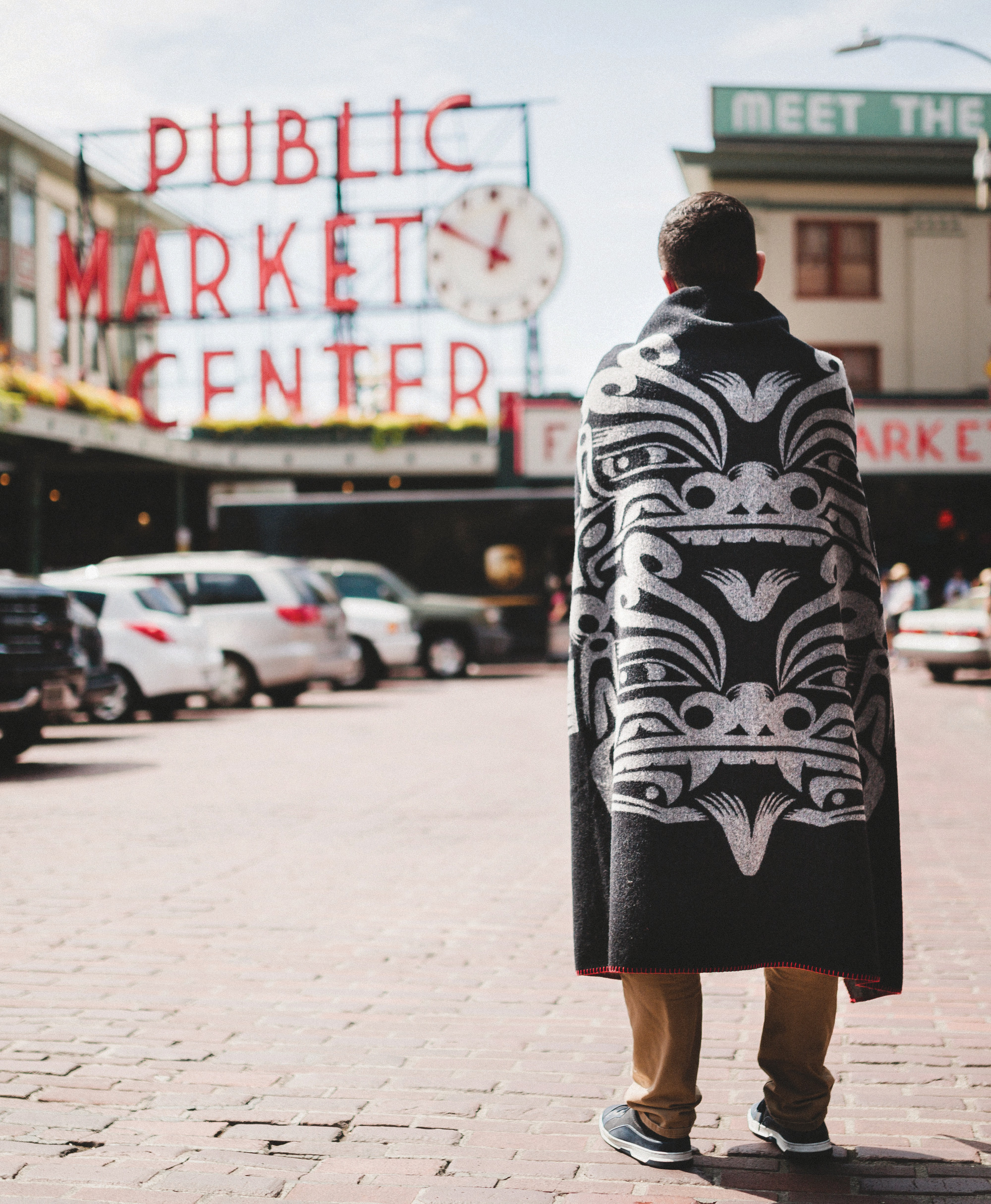
LILLIAN PITT
THE RIVER GUARDIAN glints brilliantly atop the grass of South Portland’s waterfront. The guardian’s two faces—one turned inland and one turned toward the Willamette River—are made of crystal glass. The sculpture was done by Lillian Pitt, a descendant of the Wasco, Yakama and Warm Springs Tribes of Oregon and Washington who grew up on the Warm Springs Reservation in Oregon. “Part of her is watching over the river which is the past, and history as it is flowing by and then the other part of her is watching over the people,” Pitt said.
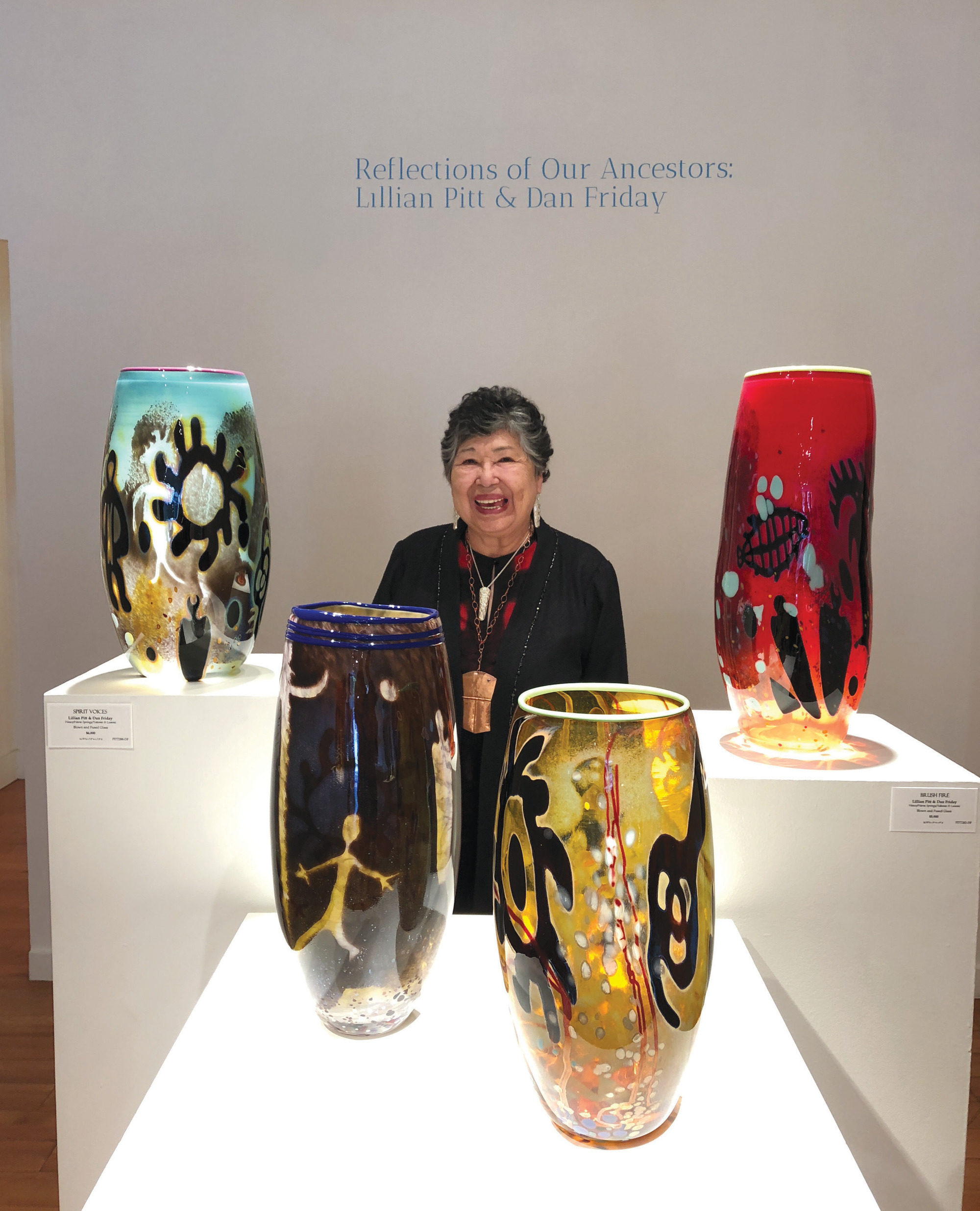
Growing up, Pitt was not seen as the artistic one in her family. “I was always taught by my mother to sit back, listen and be quiet,” Pitt said. “These days I’ve had to do so many interviews. I’m not quiet anymore.” Pitt moved to Portland, Oregon, the day after graduating from Madras High School and never looked back. “I always felt more comfortable to create in Portland.” She conceptualizes most of her work while sitting in her backyard, and her ideas come to life in collaboration with glass blowers and metalworkers.
Pitt’s heritage—and consequentially, her art—are tied to the rivers of Washington and Oregon. The lives of Pitt’s ancestors were centered on the Columbia River where tribes fished the Columbia’s salmon and traded for 10,000 years. “We used to just be a river people,” Pitt said. In 1855, the Wasco and Warm Springs tribes lost 10 million acres of land to the U.S. government in the Treaty with the Tribes of Middle Oregon. Starting in the 1930s, four dams were commissioned along the Columbia. The federal government largely failed to relocate or compensate the Native families whose villages were destroyed by flooding created by the dam. This included the village of Pitt’s great-great-grandmother, which was ravaged by the flood from creation of The Dalles dams. Now, Pitt’s ancestors serve as the muse for her work. “I like to portray fairness and equality and compassion,” she said. “As long as I respect [my ancestors], my work will show these things.”
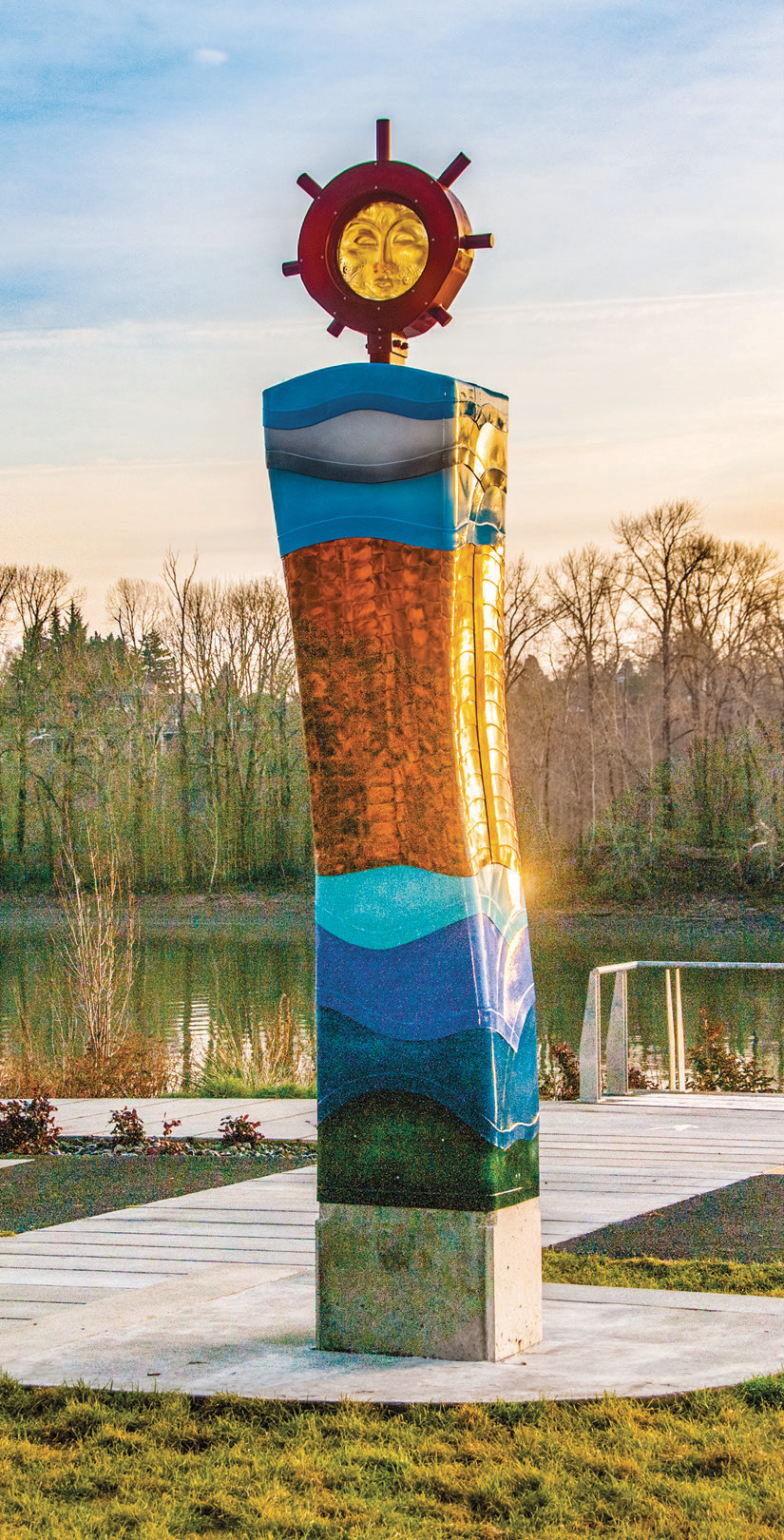
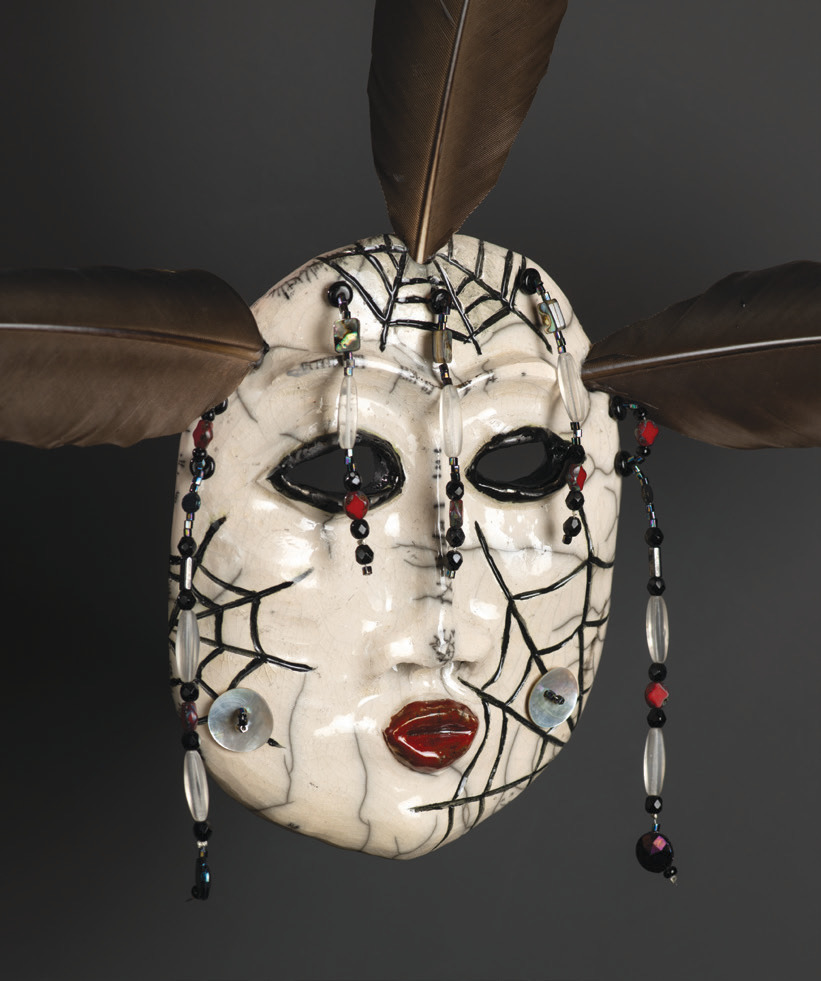
Pitt’s work has led her to widespread recognition. In 1990, she received the Governor’s Arts Award of the Oregon Arts Commission. In 2007, she received the Earle A. Chiles Award for Lifetime Achievement. She prefers to make public art, allowing the conversation around her work to be free flowing. “Usually, I am the only Indian woman to apply [for public art commissions] so I feel obligated to apply to everything,” Pitt said. Lake Oswego City Hall recently commissioned Pitt for a sculpture. She’ll also be collaborating on a sculpture at Shelton Elementary in Shelton, Washington in honor of the tribes that historically met and traded in the area.
In the fall, Pitt was invited to be on the jury for the Native Americans Veteran Memorial at the National Museum of the American Indian in Washington, D.C. The jury was initially planning to commission a white artist. “If I let this happen, I couldn’t go home and face my people,” Pitt said. She gave a speech to the jury and won the vote for artist Harvey Pratt of the Cheyenne and Arapaho Tribes. The memorial is a plain steel circle. “It is reminiscent of our drums and our teepees and it just holds us all together,” Pitt said. “The other side of the table was too removed to see that it could be something so simple as a circle.”
At age 77, Pitt believes in progression. “If you don’t move on, you get stuck. You get stuck in old thinking and not always positive thinking. If you keep moving, you’re a bigger target, but you’re still moving, and you may get out of somebody’s way.”


